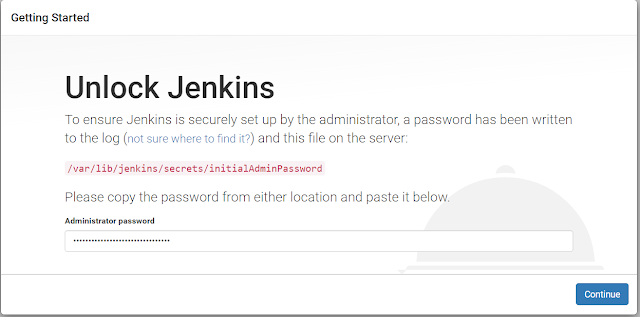Consider the below questions in mind before planing out IP Addresses scheme for their network:
1. How many IP Addresses do you need today?
2. How many IP Address will need in the future?
3. Do you have pre-existing IP scheme?
Rules for IP Addressing:
1. Each of the 4 numbers in an IP address is called and (8bits) -192.168.10.110
2. A bit is a 1 or a 0.
3. Each octet can only have a number from 0 to 255
- 00000000 = 0
- 11111111 = 255
4. The first octet cannot be 127.
5. The 127 range has been reserved for diagnostics.
6. 127.0.0.1 is known as the loopback address. (It is referred to as localhost.)
7. The host id cannot be all 0's or all 255's
- All 0's represents the network Id.
- All 255's is the broadcast address
For Example:
-192.168.10.0 is a Network ID
-192.168.10.255 is the broadcast address for the 192.168.10.0 network.
What is classful IP Addressing?
-Originally IP Addresses where divided into different class ranges:
1. How many IP Addresses do you need today?
2. How many IP Address will need in the future?
3. Do you have pre-existing IP scheme?
Rules for IP Addressing:
1. Each of the 4 numbers in an IP address is called and (8bits) -192.168.10.110
2. A bit is a 1 or a 0.
3. Each octet can only have a number from 0 to 255
- 00000000 = 0
- 11111111 = 255
4. The first octet cannot be 127.
5. The 127 range has been reserved for diagnostics.
6. 127.0.0.1 is known as the loopback address. (It is referred to as localhost.)
7. The host id cannot be all 0's or all 255's
- All 0's represents the network Id.
- All 255's is the broadcast address
For Example:
-192.168.10.0 is a Network ID
-192.168.10.255 is the broadcast address for the 192.168.10.0 network.
What is classful IP Addressing?
-Originally IP Addresses where divided into different class ranges:
Network Id Reserved | Subnet Mask
A Class : 1-126 [N | H | H | H] 255.0.0.0 [126 Networks, 16,777,214 Hosts]
B Class : 128-191 [N | N | H | H] 255.255.0.0 [16,384 Networks, 65,534 Hosts]
C Class : 192-223 [N | N | N | H] 255.255.255.0 [2,097,152 Networks, 254 Hosts]
D Class : 244-239 Reserved for Multicast Address
E Class : 240-243 Reserved for Experimental
Total of 3,720,314,628 host addresses available
Private vs Public Addresses:
1. Private IP ranges which have been reserved from "Public Internet use" (not accepted by the internet routers and cann't travel internet if using below IP addresses):
-10.0.0.0 - 10.255.255.255
-172.16.0.0 - 172.31.255.255
-192.168.0.0 - 192.168.255.255
-169.254.0.0 - 169.254.255.255 [not used in private network, it reserved for automatic private IP addressing that computer self assigned itself)
2. Hosts assigned private IP Addresses can get to the internet through a technology called Network Address Translation (NAT)
3. Most of today's companies use private IP addresses on their private networks.
A Class : 1-126 [N | H | H | H] 255.0.0.0 [126 Networks, 16,777,214 Hosts]
B Class : 128-191 [N | N | H | H] 255.255.0.0 [16,384 Networks, 65,534 Hosts]
C Class : 192-223 [N | N | N | H] 255.255.255.0 [2,097,152 Networks, 254 Hosts]
D Class : 244-239 Reserved for Multicast Address
E Class : 240-243 Reserved for Experimental
Total of 3,720,314,628 host addresses available
Private vs Public Addresses:
1. Private IP ranges which have been reserved from "Public Internet use" (not accepted by the internet routers and cann't travel internet if using below IP addresses):
-10.0.0.0 - 10.255.255.255
-172.16.0.0 - 172.31.255.255
-192.168.0.0 - 192.168.255.255
-169.254.0.0 - 169.254.255.255 [not used in private network, it reserved for automatic private IP addressing that computer self assigned itself)
2. Hosts assigned private IP Addresses can get to the internet through a technology called Network Address Translation (NAT)
3. Most of today's companies use private IP addresses on their private networks.
Example:
1. find out the Network ID, Broadcast ID, Number of usable IP address's for 11.200.200.200 ?
Ans. It is in Class A
N | H | H | H
11 0 0 0 - Network ID
11 255 255 255 Broadcast ID
11 {8 bits} 0{8 bits} 0{8 bits} 0{8 bits} - 24bits available for host use
2 power 24 - 2 = Hosts
Helpful Link: https://www.youtube.com/watch?v=_ISu9f8ofZk





